There is this:Maybe there are some on Chinese websites, like Bilibili and others.
You are using an out of date browser. It may not display this or other websites correctly.
You should upgrade or use an alternative browser.
You should upgrade or use an alternative browser.
The Warlord Atlas
- Thread starter Linbot
- Start date
I found the exact same video by the same uploader on Bilibili, which claims to be from a channel dedicated to videomapping.Snip
And here's their video on the Northern Expedition:
It's pretty impressive. They definitely had a lot more information on the main focus of the war in central China, although mine has a wider overview of the conflict.I found the exact same video by the same uploader on Bilibili, which claims to be from a channel dedicated to videomapping.
And here's their video on the Northern Expedition:
1926
The Republic of China in 1926:











1926 (Unspecified Date):
Shanghai is returned to Jiangsu. Sun Dining establishes himself in Bozhou, cooperating with the Lu Clique and the United Provinces. Sichuan's Zhili-appointed governor is overthrown by a pro-GMD officer.
March:
Tang Shengzhi seizes power in Hunan in support of the GMD. However, Zhili forces still control Changsha. Zhili Clique invades Hebei. Jiang Jieshi, a GMD general, becomes the leader of the organisation. Sun Yue rules Hebei as a semi-independent clique from the Guominjun.
April:
Jehol, Beijing, and Hebei are taken over by the Northeast Army. Zhang Zuolin, its leader, establishes the Fengtian Government under NE Army control.
May:
Guizhou withdraws from Sichuan.
June:
Liu Zhenhua besieges Xi'an in support of the Zhili Clique.
July:
The Guomindang and its allies launch the Northern Expedition, an attempt to overthrow the northern warlords. The Guominjun attacks Beijing in support of GMD campaigns further south.
August:
Zhili Clique expelled from Hunan. Northeast Army takes over Chahar.
September:
Gui Clique forces besiege Wuchang. GMD forces invade Jiangxi but are repulsed. Jin Clique seizes control of Suiyuan. Liu Zhenhua defeated.
October:
GMD forces make another attack into Jiangxi and Fujian. Guizhou joins the Northern Expedition. Wuchang falls. Zhejiang secedes from the United Provinces, but is defeated.
November:
Xiang takes over most of Jiangxi.
December:
Wuhan Government set up by left-leaning GMD leadership. Zhejiang secedes from the United Provinces a second time. Fujian taken over by the GMD.











1926 (Unspecified Date):
Shanghai is returned to Jiangsu. Sun Dining establishes himself in Bozhou, cooperating with the Lu Clique and the United Provinces. Sichuan's Zhili-appointed governor is overthrown by a pro-GMD officer.
March:
Tang Shengzhi seizes power in Hunan in support of the GMD. However, Zhili forces still control Changsha. Zhili Clique invades Hebei. Jiang Jieshi, a GMD general, becomes the leader of the organisation. Sun Yue rules Hebei as a semi-independent clique from the Guominjun.
April:
Jehol, Beijing, and Hebei are taken over by the Northeast Army. Zhang Zuolin, its leader, establishes the Fengtian Government under NE Army control.
May:
Guizhou withdraws from Sichuan.
June:
Liu Zhenhua besieges Xi'an in support of the Zhili Clique.
July:
The Guomindang and its allies launch the Northern Expedition, an attempt to overthrow the northern warlords. The Guominjun attacks Beijing in support of GMD campaigns further south.
August:
Zhili Clique expelled from Hunan. Northeast Army takes over Chahar.
September:
Gui Clique forces besiege Wuchang. GMD forces invade Jiangxi but are repulsed. Jin Clique seizes control of Suiyuan. Liu Zhenhua defeated.
October:
GMD forces make another attack into Jiangxi and Fujian. Guizhou joins the Northern Expedition. Wuchang falls. Zhejiang secedes from the United Provinces, but is defeated.
November:
Xiang takes over most of Jiangxi.
December:
Wuhan Government set up by left-leaning GMD leadership. Zhejiang secedes from the United Provinces a second time. Fujian taken over by the GMD.
Crazy Boris
Banned
Is that a tiny little nugget of Tibet stuck between Guominjun and Qinghai Ma? How did that get there?
https://en.m.wikipedia.org/wiki/Golok_rebellions_(1917–1949)Is that a tiny little nugget of Tibet stuck between Guominjun and Qinghai Ma? How did that get there?
Basically it's a tribal insurgency affiliated with the Tibetan Army.
https://en.m.wikipedia.org/wiki/Golok_rebellions_(1917–1949)
Basically it's a tribal insurgency affiliated with the Tibetan Army.
I have learned much from this thread.
Debugging 1.6.0 was... fun.
Conversely, the new map modes make it easier to show off the effort I've put into state modding.
Known Problems:
- Sichuan Clique should really be three separate nations (I know, god forbid I add another tiny nation).
- I'll probably split Henan at some point
- I have yet to add in the decisions for creating Mengkiang, the Lianggunag Incident, Nanjing annexing Sichuan and Shantung, and Shanxi losing Henan when the war begins and gaining Hebei when it ends.
- Hsikang, Sichuan, Hopeh, Hunan, and Tunganistan have no divisions.
- Japan has no garrison in Shanghai, although I did give them a one-province state there to simulate this.
- A lot of nations' divisions are outside their territory now.




Conversely, the new map modes make it easier to show off the effort I've put into state modding.
Known Problems:
- Sichuan Clique should really be three separate nations (I know, god forbid I add another tiny nation).
- I'll probably split Henan at some point
- I have yet to add in the decisions for creating Mengkiang, the Lianggunag Incident, Nanjing annexing Sichuan and Shantung, and Shanxi losing Henan when the war begins and gaining Hebei when it ends.
- Hsikang, Sichuan, Hopeh, Hunan, and Tunganistan have no divisions.
- Japan has no garrison in Shanghai, although I did give them a one-province state there to simulate this.
- A lot of nations' divisions are outside their territory now.




Last edited:
do you have a set colour palette for these maps? Because I'm looking to rework china in my TL and can't find any good colour palettes for them.
The East Asian parts of my personal colour scheme:do you have a set colour palette for these maps? Because I'm looking to rework china in my TL and can't find any good colour palettes for them.
Notes:
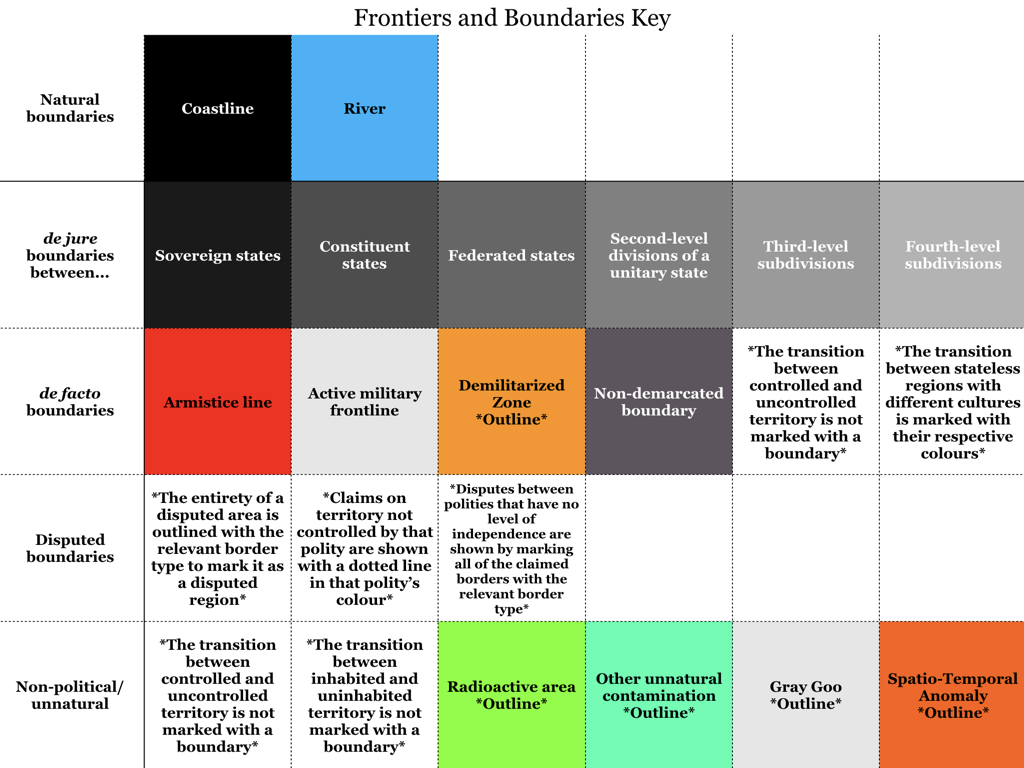
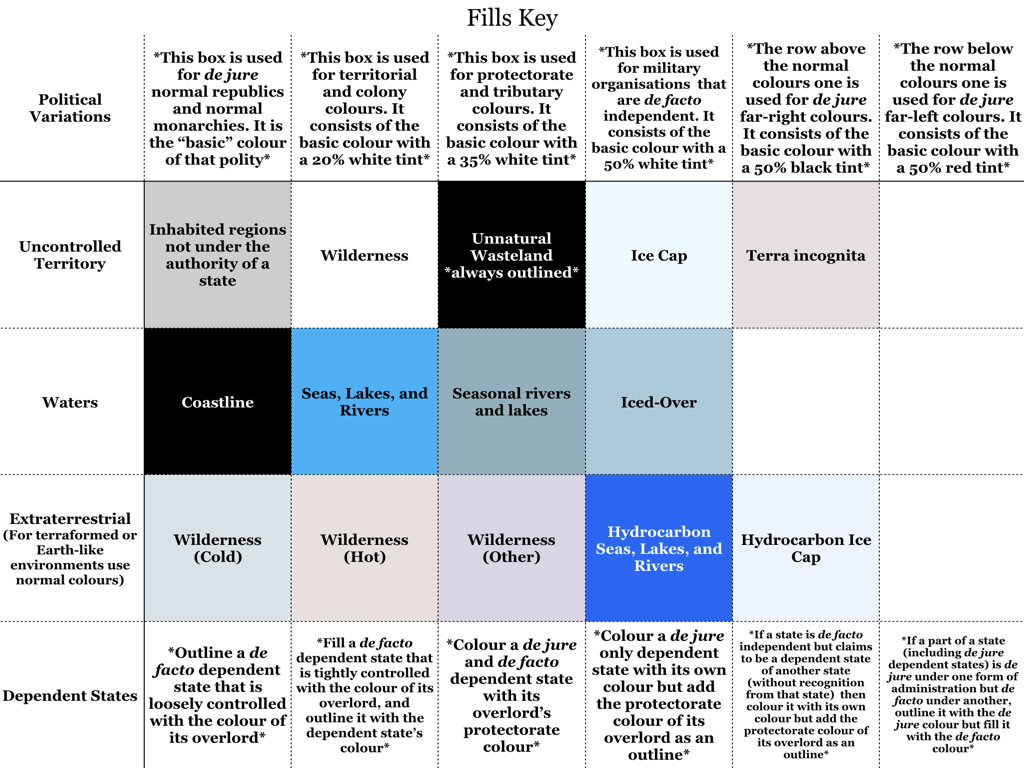
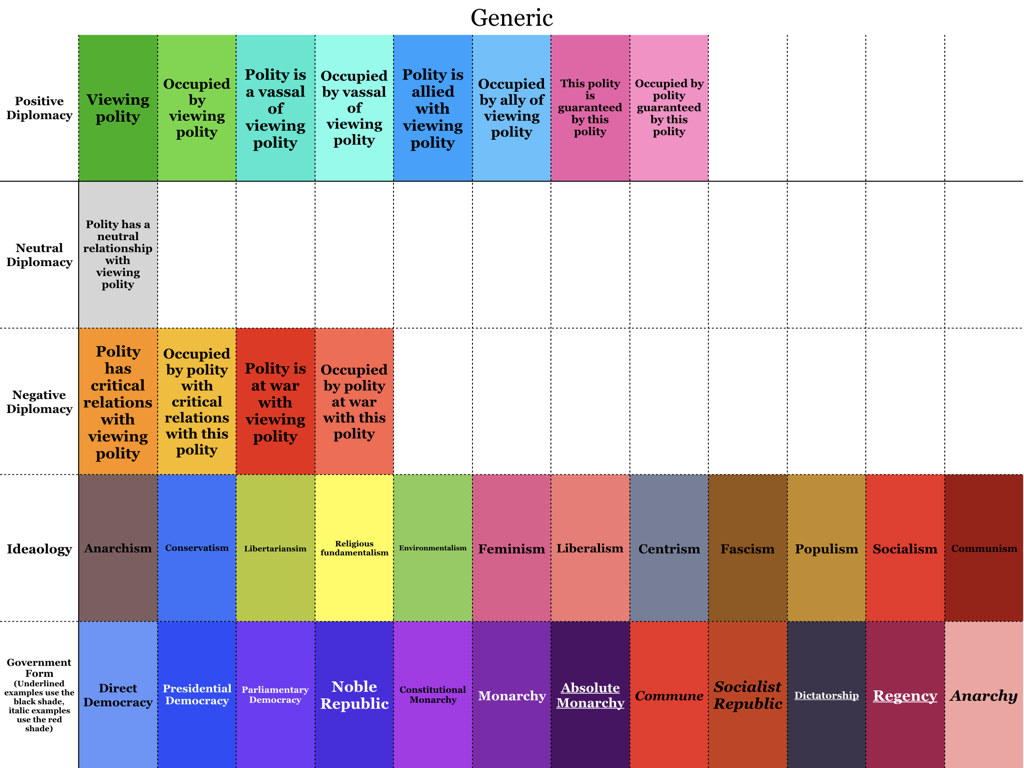
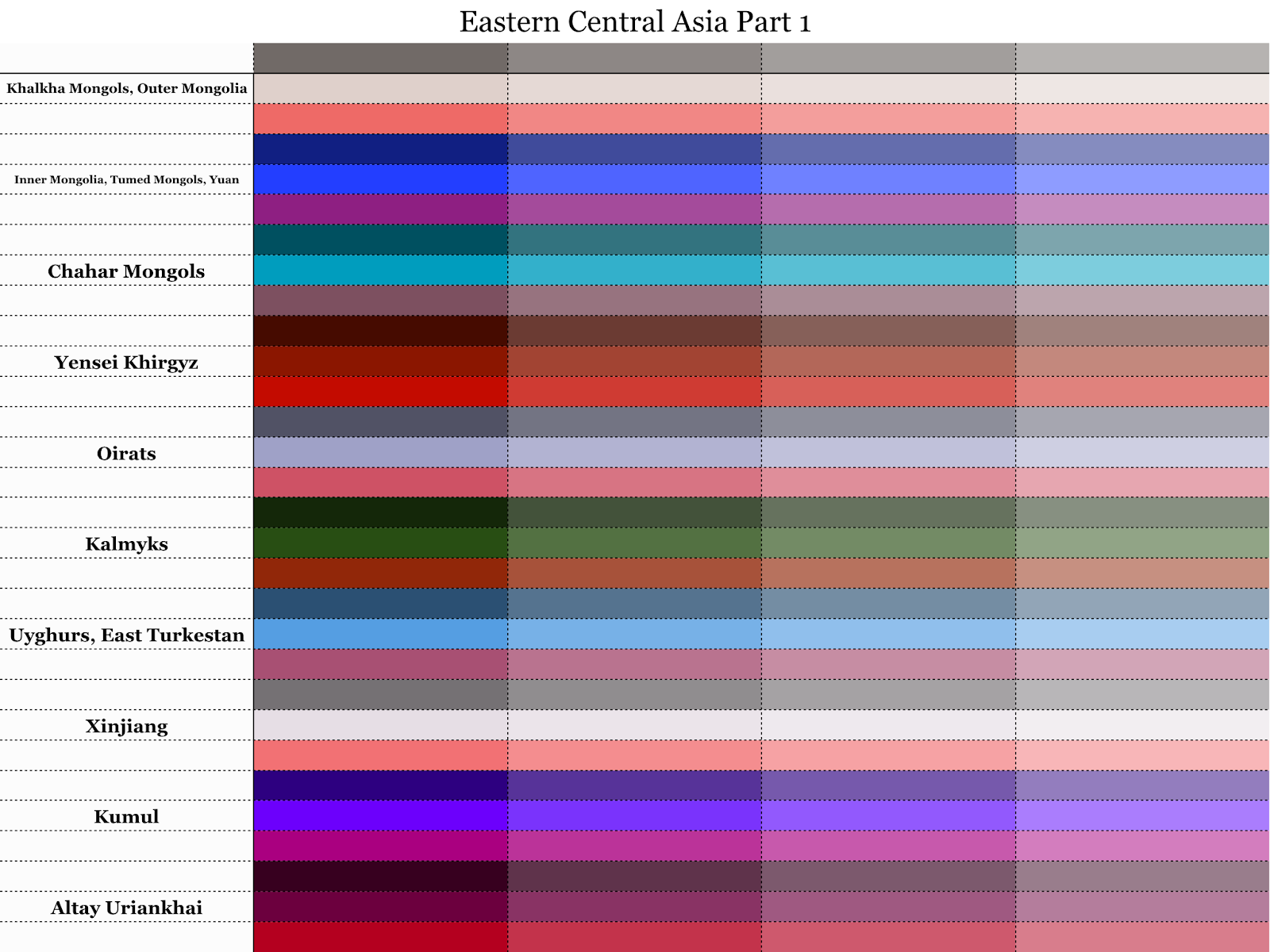
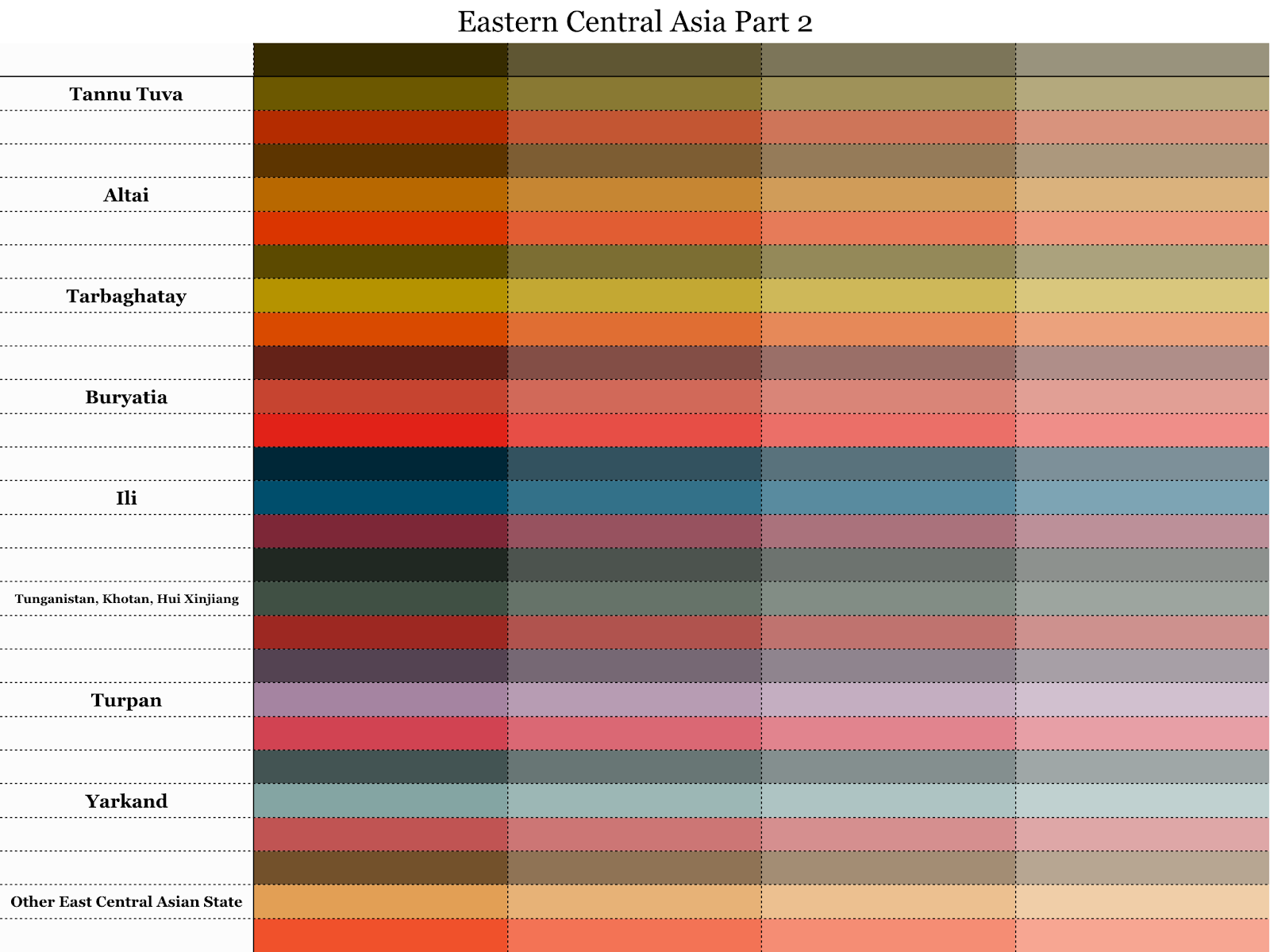
China:
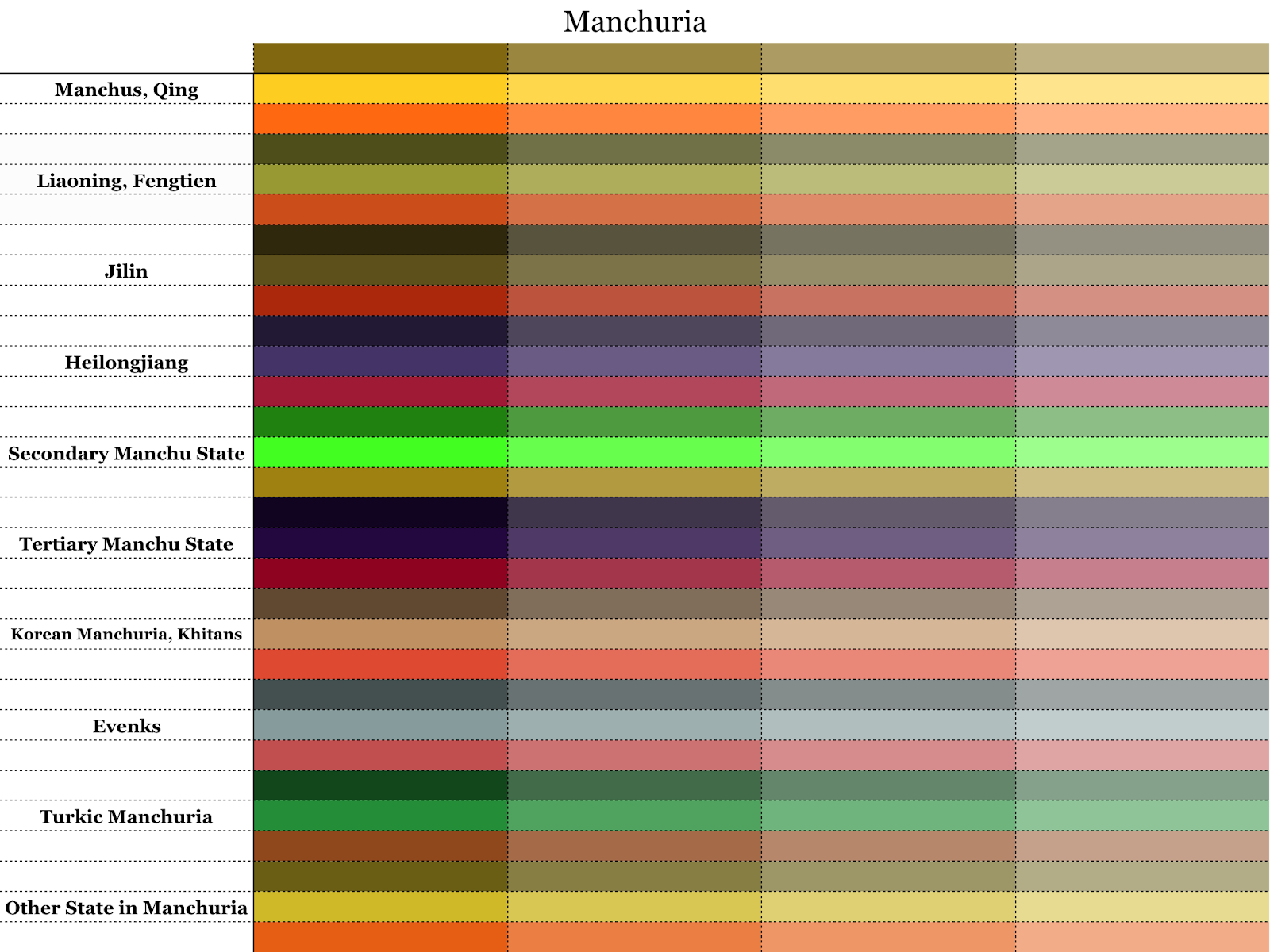


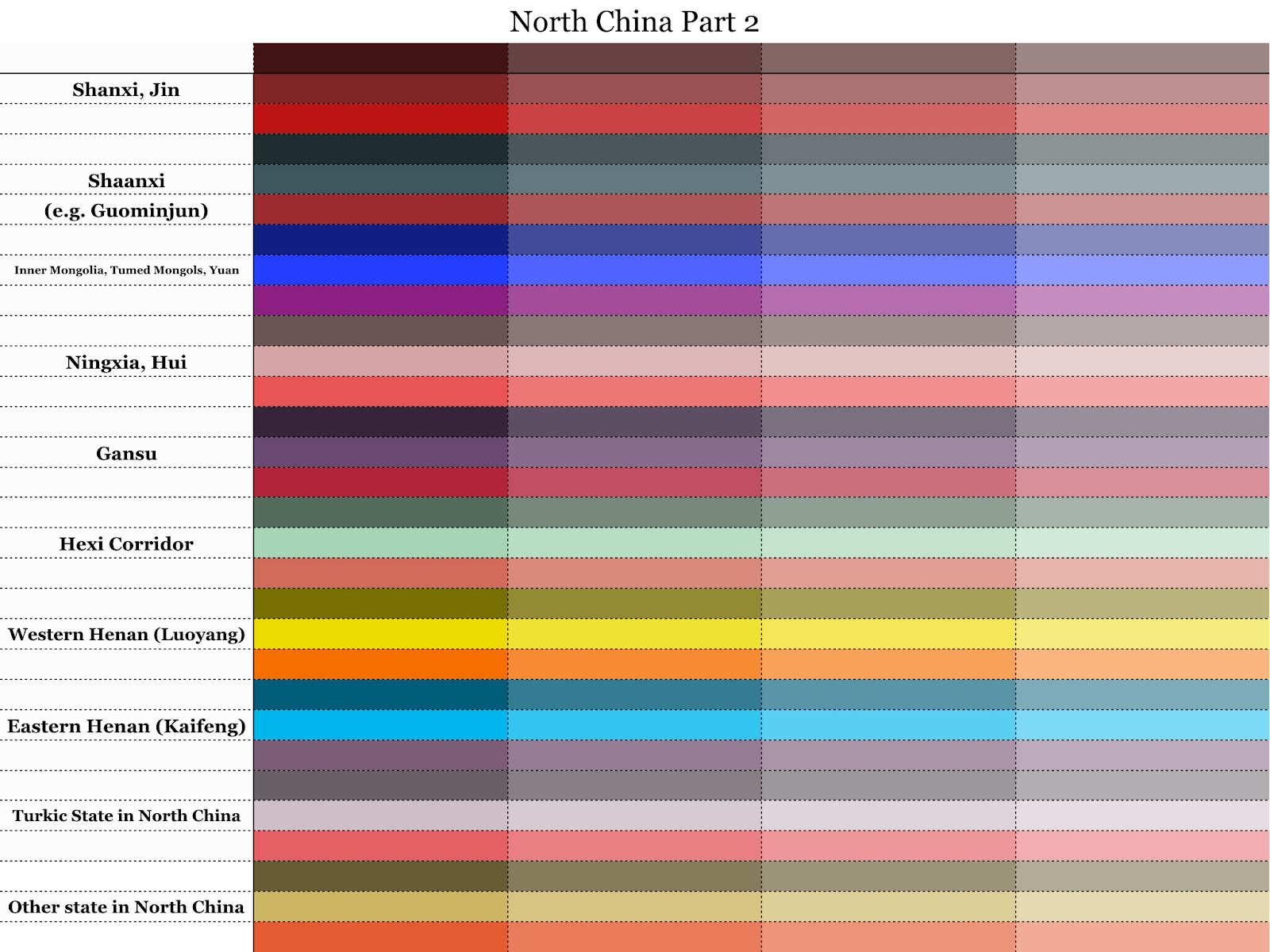

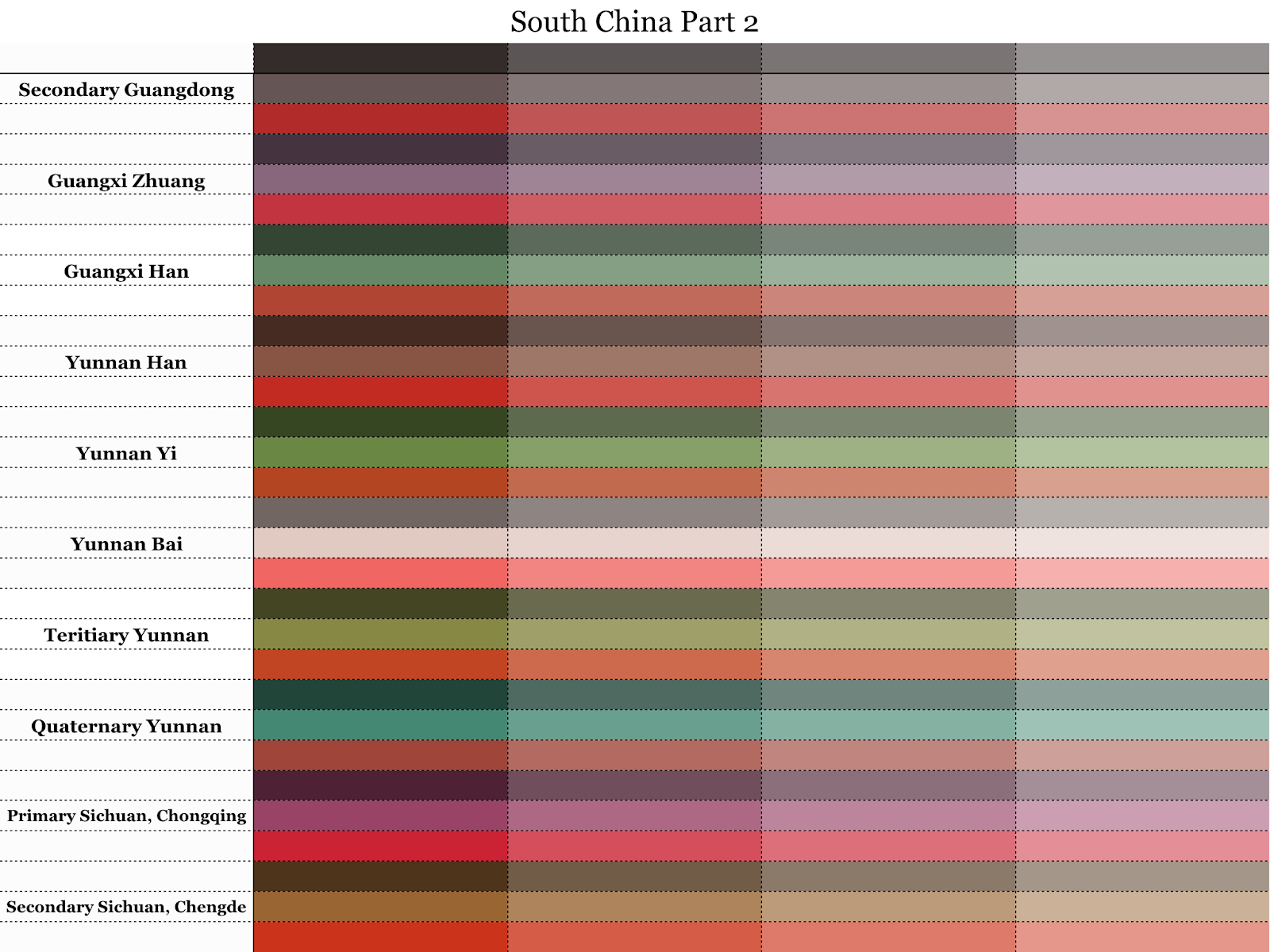
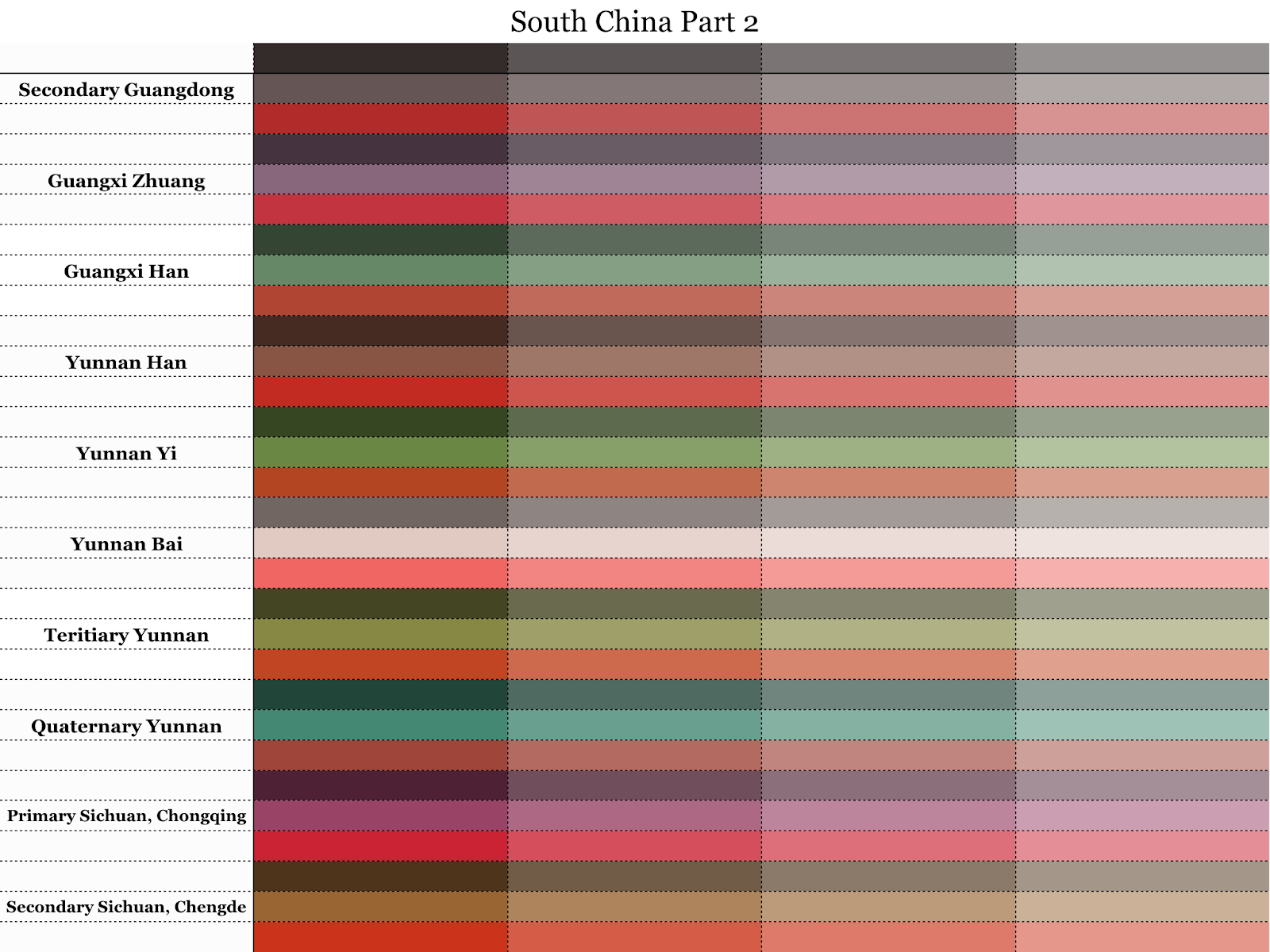
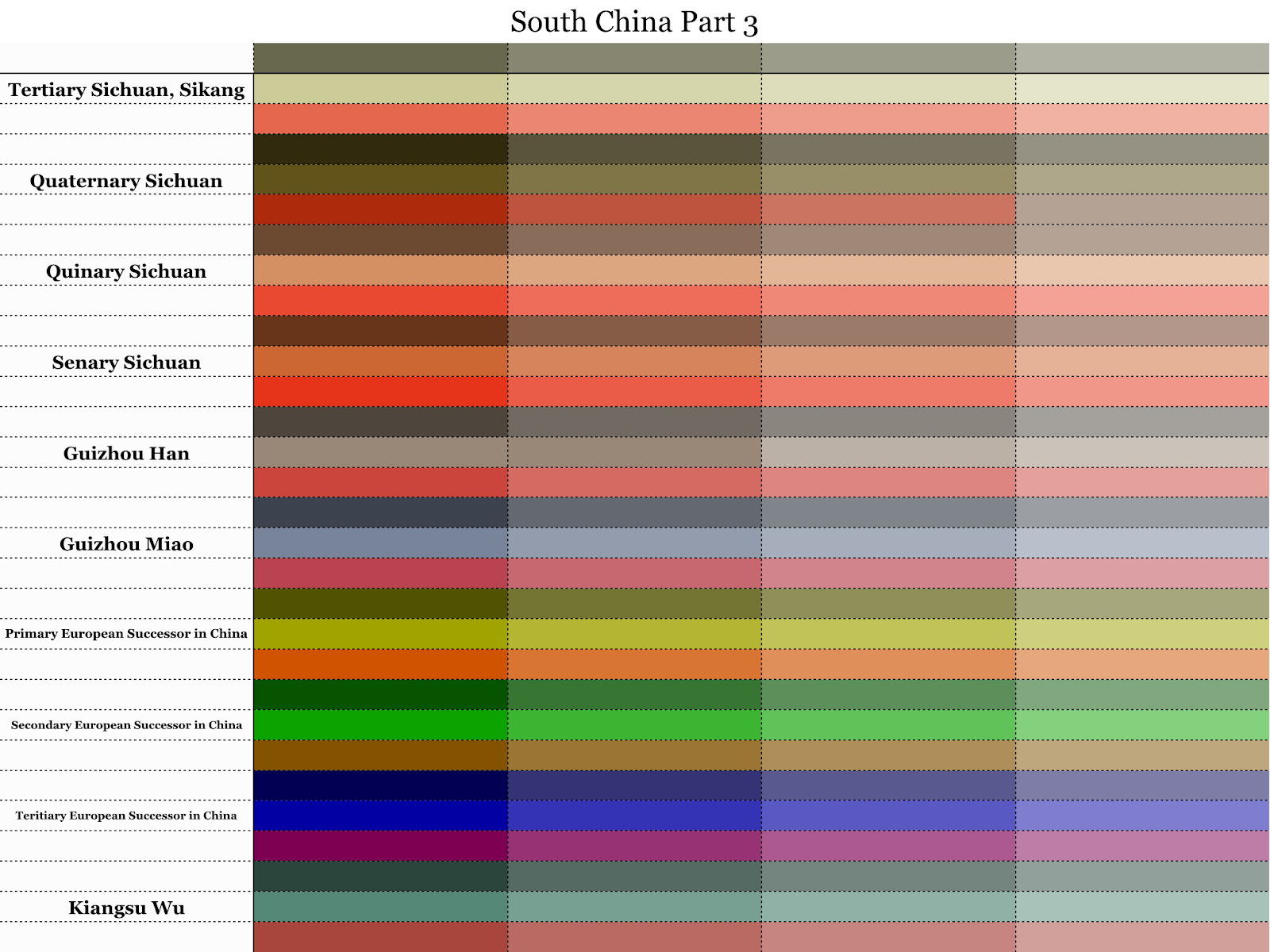
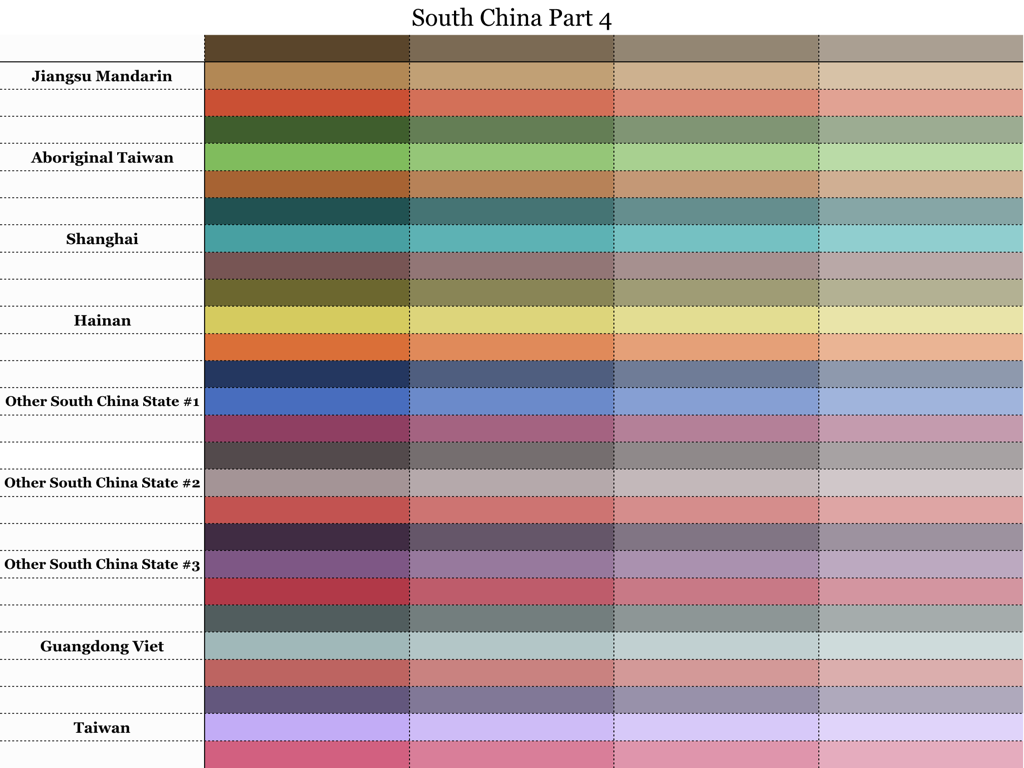
France - 6d9cb8
Japan - BC022D
- “Far-Right” should include conservative dictatorships and absolute monarchies. Non-authoritarian forms of government that are still considered far-right (e.g. anarcho-capitalism) are also included.
It does not include states ruled by parties with far-right orientations (e.g. if the NPD becomes the ruling party of Germany, then Germany will stay its normal colour because the NPD is still operating under a democratic system)
- “Far-left” should include any state built around a radical “revolution” movement.
- “Normal” is any system of government not included under the previous categories.
The basic colour of each country is used to colour regions under its normal administrative system.
- If a situation occurs where two factions would have the same colour according to the rules above, it’s okay to bend the rules or switch colours.
- A “territory” is an area that is outside the state’s normal administrative system and administered directly by the central government.
- An “autonomous region” or “tributary” is an area that enjoys more autonomy than a normal administrative unit. If it is officially within the state, it is an autonomous polity; if it is officially outside the state, it is a tributary (the colour does not vary since the two conditions are indicated by border colours). This colour is only used if the situation is de jure.
- The lightest colour in the palette is used to show the area controlled by political or military organisations that act independently of the central government, but recognise that government’s legitimacy, and are not actually states of any kind. For example, the SS in many Axis victory TLs would be given this colour if it acquires territorial possessions.
China:
France - 6d9cb8
Japan - BC022D
Basically it's a thread where I post maps of the 1911-1957 Warlord Era in China. The main maps are just straight maps, but I do other stuff too, like HoI4 mods and animations.What is this thread? Looks pretty interesting!
Basically it's a thread where I post maps of the 1911-1957 Warlord Era in China. The main maps are just straight maps, but I do other stuff too, like HoI4 mods and animations.
OH! This is great! I am very interested in this era in Chinese history! Have you already on maps on Second Sino Japanese War? Would you or do you do more detailed maps of specific area within China?
OH! This is great! I am very interested in this era in Chinese history! Have you already on maps on Second Sino Japanese War? Would you or do you do more detailed maps of specific area within China?

Awesome! Do you also do maps on specific battles as well? From the Warlords Era of from the Second Sino-Japanese War? Like Shanghai or Wuhan?
It's hard to find information about battle because a lot of the place names in references can't be found by searching online. A lot of "battles" in that era were really campaigns in scale, so a good idea about what happened can be gotten by just watching a video of the war.Awesome! Do you also do maps on specific battles as well? From the Warlords Era of from the Second Sino-Japanese War? Like Shanghai or Wuhan?
It's interesting to see how the Sino-Japanese War lines up with World War II. To that end, I've decided to put together this, using Omniatlas and my own work:
"Winter War" 11 March 1940
*Suiyuan Campaign*
View attachment 423817

"Invasion of Denmark and Norway" 24 April 1940
*Suiyuan Campaign*
View attachment 423816

"Blitzkrieg in the West" 25 May 1940
View attachment 423815
"Fall of France" 21 June 1940
*Battle of Zaoyi*
View attachment 423814
"Battle of Britain" 7 September 1940
*Hundred Regiments Campaign*
View attachment 423813
"Italian Offensives" 3 November 1940
*Occupation of Northern Indo-China; Hundred Regiments Campaign*
View attachment 423812
"Italian Fiascos" 26 February 1941
*Franco-Thai War; Battle of Southern Henan*
View attachment 423811
"Germany in the Mediterranean" 16 April 1941
*Franco-Thai War; Battle of Shanggao*
View attachment 423810
"Eve of Barbarossa" 21 June 1941
*No major actions*
View attachment 423809
Its really quite fascinating also to learn about how divided China really was at this point in time, making their war that much more challenging.
1927



1927 (Unspecified Date):
Sichuan Clique breaks up.
January:
United Provinces invades Zhejiang. However, they are unable to conquer it entirely. NRA troops break through in Fujian and extend their control over Zhejiang. Guizhou ends its alliance with the Nationalists.
February:
United Provinces troops withdraw from Zhejiang.
March:
Nationalist troops under Jiang Jieshi and the Xiang provincial army under Tang Shengzhi invade Anhui and Jiangsu. With Communist support Jiang captures Shanghai; he then attacks Nanjing and captures it as well. Jiang moves his base of operations to Nanjing, solidifying his position as an alternative centre of power to the official GMD government in Wuhan. Jiang's relocation northwards allows the Gui Clique to assume power in Guangdong.
April:
The discord between Jiang Jieshi and Wuhan erupts into a conflict, with the GMD's left wing (including the Communist Party) aligning with Wuhan and the right wing with Nanjing. In response Jiang purges Communists in Shanghai. The warlord factions aligned with the GMD mostly align with Jiang Jieshi, except for Tang Shengzhi's Xiang Clique, probably rescuing the Wuhan Government from destruction as otherwise it has no military. In the chaos Sun Chuanfang launches a counterattack against the GMD and retakes much of Anhui.
May:
Though split from each other, both GMD factions commit to continuing the Northern Expedition. Wuhan advances into Henan, while Jiang Jieshi leads a counteroffensive towards Xuzhou. The Guominjun also invades Henan and captures Luoyang. With most of his remaining domains fallen to the NRA, Wu Peifu resigns. His remaining army joins forces with Northeast Army troops entering the province to arrest further NRA advances.
June:
The Guominjun takes Zhengzhou and Jiang takes Xuzhou. The Guominjun, ostensibly neutral in the Wuhan-Nanjing conflict until this point, negotiates with both factions but ultimately aligns with Nanjing. The Guominjun refrains, however from military action in accordance with this.
July:
Though heavily shaken by its recent defeats, the United Provinces army (though now with all of its provinces defected to or seized by the Nationalists) still remains in the field. With assistance from the Northeast Army and support by Japan, Sun Chuanfang begins a counteroffensive. He succeeds in driving the NRA back and advances on Nanjing. The Chinese Communist Party, previously an ally of the Wuhan Government, are expelled by it, ending the First United Front.
August:
Communist forces attempt to seize Nanjing from the Xiang Clique, but they are unable to hold the city and retreat to the Hunan-Jiangxi border. On August 12 Jiang Jieshi agrees to resign his position as commander-in-chief of the Nanjing GMD, ending the conflict between the two sides. Sun Chuanfang's counteroffensive reaches Nanjing, but he is unable to take the city. Most of his troops are trapping g south of the Yangtze and surrender, marking the beginning of the end for Sun Chuanfang. At the same time, the Guominjun invades Shandong.
September:
The Guominjun is unable to continue its advance in Shandong and retreats back to Henan. The Wuhan government agrees to dissolve itself and merge with the Nanjing government, with the Xiang Clique moving its base of power to Wuhan. A new GMD government is formed under the leadership of the New Gui Clique. At this juncture, Yan Xishan's Jin Clique declares its allegiance to the Nationalist cause. Tang Shengzhi refuses to recognise the new government, however, and his Xiang Clique becomes a major threat to the newly reunited GMD.
October:
The Jin Army engages with the Northeast Army in Hebei. Though its military success is limited, the Northeast Army is unable to defeat it and forced to divert troops northward to counter the new threat. GMD troops attack the Xiang Clique, which begins to collapse under the pressure.
November:
The Xiang Clique is defeated by the Nationalists and its territory falls under the New Gui Clique's authority. With their troops freed up from the southern campaign, the Nationalists launch a new offensive against Sun Chuanfang. Communist uprising in Guangzhou.
December:
Communists in Guangzhou are defeated and retreat into the mountains. The Nationalists capture Xuzhou, forcing Sun Chuanfang to retreat into Shandong.
Last edited:
Share:
